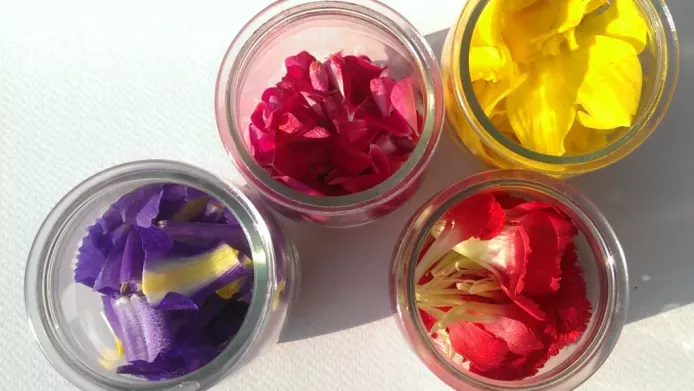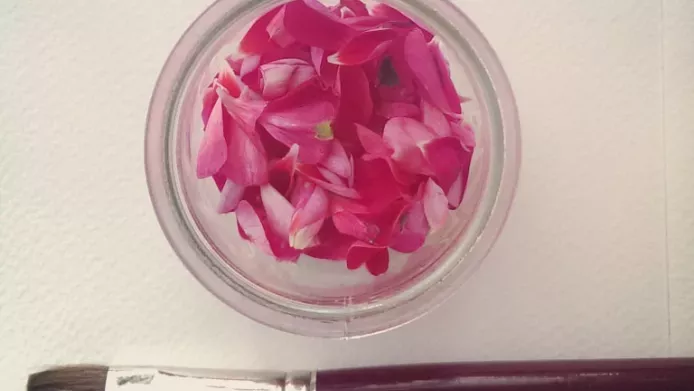A step by step guide to painting with wildflower petals
Natural pigments from the earth – rocks, minerals, plants and flowers – have always been the base ingredients for paint-making and dyes. The indigo plant, for example, makes India’s famous blue dye; the madder root makes reds and pinks, and saffron and turmeric make yellow.
You can easily make your own paints using flower petals – or simply use the petals themselves to paint!

Instant petal painting
Skill level: Easy
Preparation time: 15 minutes
Cost: Free!
Materials and tools:
- Petals
- Lightweight watercolour paper
Safety first
Remember to always wash your hands after touching flowers and leaves as some can be toxic.
Painting with petals is a great way to come into direct contact with flowers and really notice their colour and beauty as they are released onto the page. It’s a process of discovery too – some petals release colour easily, and some don’t. Some will surprise you with the colour that appears, while other colours will transform slightly once they are dry.
Step 1
Collect your flowers. Poppies, buttercups, daisy heads, geraniums, dandelions and cornflowers all make bright colours, and all their different types of leaves make various greens. Make sure your ask permission from the landowner or the gardener before picking any flowers.
Step 2
Rub the petals directly on to a lightweight watercolour paper – and play with the colours!
Step 3
Keep going and get creative! Let the picture dry away from direct sunlight.

Making petal inks and watercolours
Skill level: Medium (adult supervision required)
Preparation time: 15 minutes
Cost: Less than £10
Materials and tools:
- Petals
- Glass jars (old jam jars work well)
- A sieve
- Vinegar
- Salt
- Alcohol (optional)
- Lightweight watercolour paper
Safety first
This activity involves boiling water and alcohol, please make sure an adult is supervising. Plus remember to always wash your hands after touching flowers and leaves as some can be toxic.
This is the simplest, safest and most natural technique to make your own water inks from flowers. It’s good to play around with what’s in the garden or growing wild as you’ll find some petals release their colour more easily than others.
Poppies make particularly good reds, while cornflowers produce a traditional turquoise ink. Depending on the flowers you choose, you’ll find that intensity and fastness of colour will vary – but that’s half the fun and there are no rules. You can mix the flowers up, and use your instinct. Have fun experimenting!
Step 1
Pick your flowers (remember to ask permission) – enough petals to fill a coffee cup, packed moderately. Find a small jar in which to cover the petals with warm or boiling water. Leave for a few hours – or even better overnight. Keep testing the colours to check intensity.
If you like you could also boil the water with the petals which can intensify the colour. Using a non-metal container if possible, boil two cups of water and drop the flowers in. Boil until the water changes colour significantly and has evaporated down until there’s about enough to fill a small jar. Tip: use as many petals as you can and don’t add too much water because you want as concentrated a colour as possible.
Step 2
Add 2–3 drops of vinegar and a pinch of salt. Salt helps to 'fix' or increase the 'fastness' of the colours, so does the vinegar which also improves reds and purples. You can also add a strong alcohol in proportions of one part alcohol to four parts ink.
Step 3
Using a sieve, strain the liquid into the jar and the ink is ready to use. Use lightweight watercolour paper to paint on.
The added magic of this paint is that it smells divine!
Flowers make gentle paints with a powerful result. It’s great to notice the colour differences through the seasons. Also, if you’re feeling down or tired or even a bit anxious, painting with flowers this way may help you feel calmer, more energised and inspired!
Images by Eleanor Sara Darley